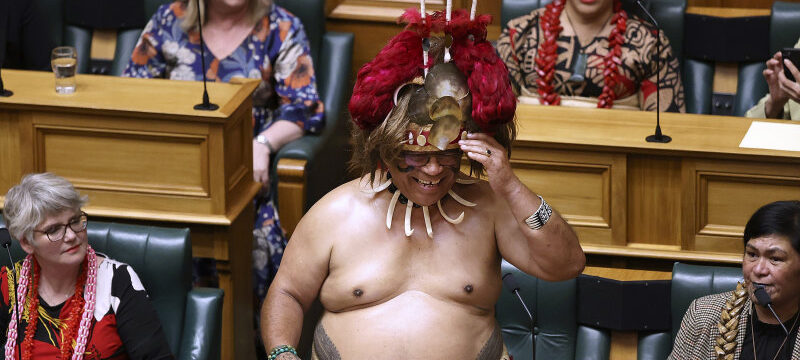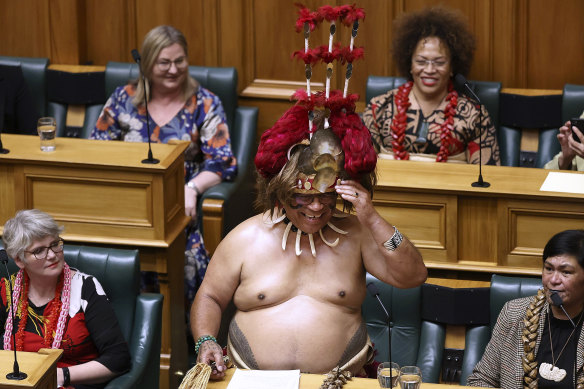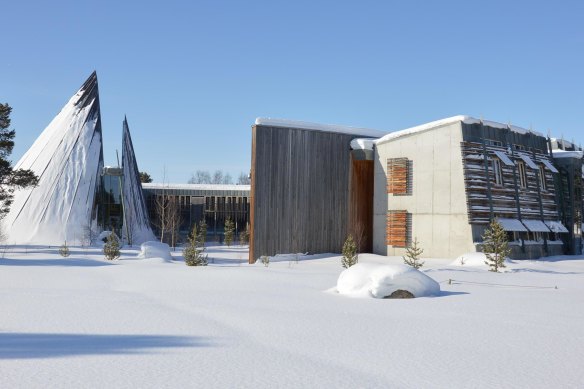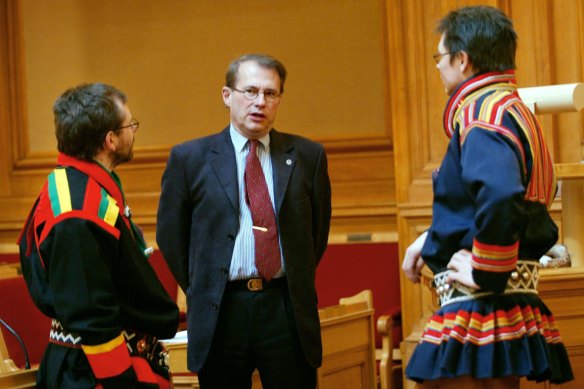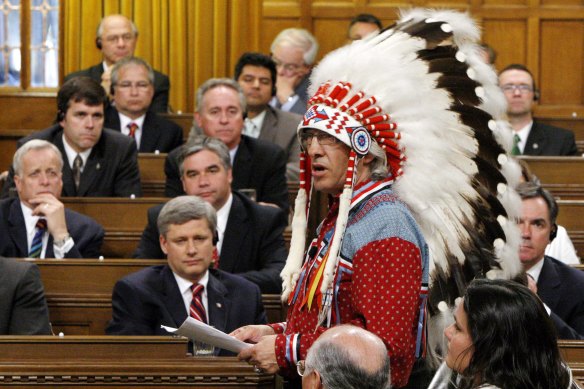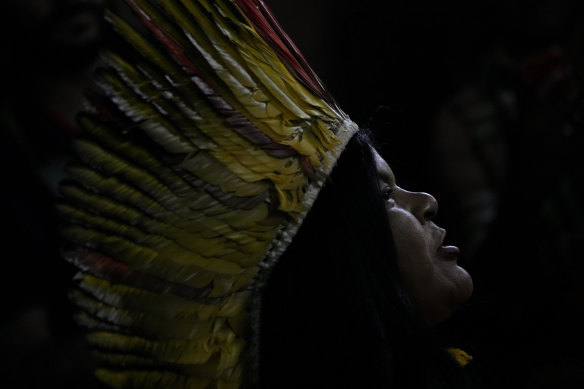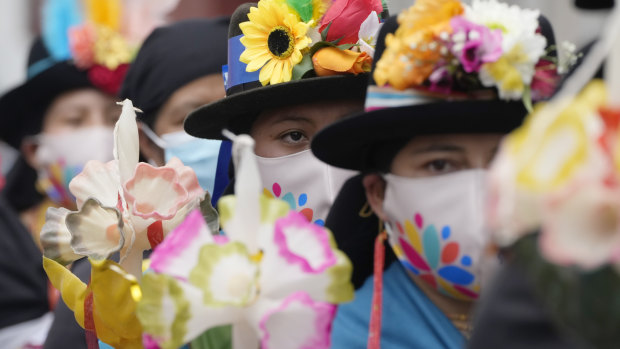Save articles for later
Add articles to your saved list and come back to them any time.
Australia is counting down to its first referendum since 1999, when the nation will decide whether to alter the Constitution to recognise First Nations people by establishing a representative body known as the Voice.
The question has polarised the political class, with battle lines between the Yes and No camps drawn long ago in an increasingly bitter culture war on the approach to the October 14 poll.
As campaigns on both sides make their final pitch to Australians about the merits and pitfalls of the proposed advisory body, we consider some minority representative bodies and mechanisms around the world and their role in giving Indigenous people in those nations a voice.
Across the ditch
Starting in the neighbourhood, New Zealand indigenous representation in parliament has been locked in with designated Maori seats since 1867. The proposed Australian Voice would not require this.
Introduction of the legislated Maori seats followed the 1840 signing of the Treaty of Waitangi, widely considered the founding document of New Zealand. It sought to protect Maori rights over land, forests and fisheries while handing sovereignty to the British.
There have been recent moves to introduce a process called “co-governance”, which would include Māori leaders in some decisions on public assets; however, this has garnered some opposition.
New Zealand outgoing minister for Pacific peoples, Aupito William Sio, dressed in traditional Samoan finery, including a feathery headdress called a tuiga, to deliver his final speech to parliament, in Wellington on August 22.Credit: NZHerald/AP
New Zealand’s parliament has one House of Representatives, made up of about 120 members. There have been seven dedicated Maori seats since 2008. The boundaries of these electorates cover general electorates, meaning every part of New Zealand has both general and Maori-specific representation. Members in dedicated seats can commit wholly to Maori issues, while Maori members representing general electorates must also consider the interests of the broader population.
Across New Zealand’s ministries, there are roles dedicated to Maori issues, with ministers for Maori Crown relations, Maori development (including housing and employment) and health. Foreign Affairs Minister Nanaia Mahuta is among the most prominent Maori representatives.
Europe
The European Union’s only indigenous people have their roots across northern parts of Finland, almost half of Sweden and Norway and parts of the Kola Peninsula in Russia, in an area known as the Sami Area or Sapmi.
Designated Sami parliaments of Norway, Sweden and Finland represent the interests of the indigenous people who have inhabited northern Scandinavia for thousands of years. The three bodies are elected by and from the Sami people to promote indigenous interests.
The Sami Parliament of Norway.Credit: Commons
Representatives are elected by different registered Sami constituencies every four years. However, they do not have a formal legislative function. They are mostly consultative bodies and not parliaments as in the Westminster system. Their main purpose is to promote language, culture, land rights and social wellbeing.
The Nordic Policy Centre suggests Norway’s Sami parliament, established in 1989, has the greatest scope because it has closer ties to the Norwegian political system once both Sami and national political party candidates can run for election to the Sami parliament.
Two unidentified Samis in traditional dress talk to then-speaker of the Swedish parliament Per Westerberg, centre, as the Sami Parliament convened in Stockholm in 2004. The Samis gained their right to a governing body of their own in the 1980s. Credit: AP
In Finland, the constitution enshrines indigenous rights to self-regulation, including the right to use their own language in dealing with authorities. Attempts by then-Finnish prime minister Sanna Marin to enhance Sami rights laws failed to pass parliament in February, with right-wing parties objecting to functions that would change rules governing the way people identify as Sami.
North America
In the United States, American Indian tribes are formally recognised under the constitution. There are 574 native nations federally acknowledged as the original sovereigns of North America. Through treaties, they have powers akin to federal and state governments to manage their own affairs. However, representative groups have criticised the ambiguity of this status and shortcomings in the negotiation and honouring of treaties.
Tribal sovereignty in the US protects indigenous groups in establishing their own form of government through legislation, police departments and tribal courts. This process is considered essential to protecting indigenous culture and identity.
Then national chief of the Assembly of First Nations Phil Fontaine addresses the Canadian parliament in 2008.Credit: Reuters
Canada’s constitution of 1982 recognises that Indigenous people owned and governed the lands which make up the country today. It states that “the existing aboriginal and treaty rights of the aboriginal peoples of Canada are hereby recognised and affirmed”.
The constitution also requires consultation with “aboriginal peoples of Canada” before any alterations to certain sections of the document. Key principles laid out by Canada’s government acknowledging indigenous rights include recognition of historic treaties, giving all indigenous people the right to enter into treaties with the Crown “as acts of reconciliation”.
South America
As Australia’s Yes camp gears up for the October 14 poll, it won’t be looking to Chile for inspiration, where a sweeping majority of voters recently rejected a move to enhance indigenous rights by changing that country’s constitution last year. A referendum in September last year was billed as a watershed moment to enshrine the rights of indigenous groups, the environment and women in a new constitution, which also included enhanced abortion rights, fair political representation for minorities and autonomous territory provisions. However, critics said the document went too far, and it ultimately slumped with just 38 per cent of voters supporting it. The resounding failure was a blow to the country’s 36-year-old leftist President Gabriel Boric, who has promised to try again with a different text.
Sonia Guajajara, Brazilian Minister of Indigenous Peoples, speaks at a press conference in August, during the Amazon Dialogue meetings between countries whose lands make up the rainforest.Credit: AP
Brazil’s 1988 constitution recognises the indigenous population must be protected along with its “culture, way of life, means of production and way of interpreting the world”. It also protects indigenous lands as having “original rights”, although the country is currently grappling with proposed changes that could water down that provision.
A decades-old indigenous foundation, FUNAI, which represents the rights of all indigenous peoples of Brazil, this year came under a new federal Ministry of Indigenous Peoples headed by an indigenous minister. A second body – the National Council of Indigenous Policy (CNPI) – extinguished by former far-right president Jair Bolsonaro, but revived by his successor Luiz Inacio Lula da Silva in April, now also reports to the ministry. The presidential decree re-establishing the council details its duties and make-up: It comprises 27 representatives of the government (all ministries) and 27 representatives of indigenous communities around the country, each with a right to vote; and four representatives of non-profit indigenous entities, who act as advisors, without the right to vote. The council is “a consultative body responsible for preparing and monitoring the implementation of public policies aimed at indigenous peoples”, according to the decree.
Progressives in Ecuador had better success in 2008, when the republic passed a new constitution, acknowledging indigenous peoples’ land rights and the rights of nature. That document was recognised as a historic step in securing the rights of indigenous peoples to pursue traditional livelihoods and practices.
Indigenous women celebrate the recognition of the Pawkar Raymi (Flowering Festival) by the government, in Peguche, Ecuador, last year.Credit: AP
Africa, Asia and the Middle East
In South Africa, population 59 million, about 1 per cent is estimated to be indigenous. Collectively, those groups are known as Khoe-San, comprising the San and the Khoikhoi. While indigenous people are still not formally recognised in legislation, the 1996 constitution included a reference to Khoe and San people.
Advocacy groups have described recent progress in 2020, when President Cyril Ramaphosa signed the Traditional and Khoi-San Leadership Bill into law, granting “already recognised” traditional leaders the power to manage land, including with investment companies. The International Work Group for Indigenous Affairs said the act culminated a two decade-long journey for Khoikhoi and San communities to be included in South Africa’s formal traditional leadership and governance system.
Last year the Democratic Republic of the Congo enshrined new legislation that safeguards the rights of indigenous pygmy people, including land rights. It marked a major victory that recognises the rights of indigenous communities living in tropical forests of the Congo Basin.
In Zimbabwe, the Senate or upper house reserves 18 of 80 seats for traditional chiefs who are elected from provinces around the country. Its constitution calls on the state to preserve, protect and promote indigenous knowledge systems, and also entitles compensation to indigenous Zimbabweans whose agricultural land was acquired by the state.
Singapore’s constitution outlines that the government must care for the interests of racial and religious minorities, acknowledging the “special position” of the Malay indigenous people. The document states the government must “protect, safeguard, support, foster and promote their political, educational, religious, economic, social and cultural interests and the Malay language”.
In Malaysia, the indigenous populations of the Orang Asli, Orang Ulu and Anak Negeri groups still face significant challenges over land rights. The groups are estimated to make up almost 14 per cent of the population. Laws recognising customary indigenous land rights and laws introduced during British colonial rule are still in place. However, in many cases they are not properly implemented, with private company plantations and resource extraction often taking precedence.
Vanuatu supports a traditional chiefs’ representative and consultative body, however it does not reserve seats for indigenous representatives in its legislature. Its 1980 constitution acknowledges indigenous customary law and gives traditional chiefs a role in the governance of custom.
Get a note directly from our foreign correspondents on what’s making headlines around the world. Sign up for the weekly What in the World newsletter here.
Most Viewed in World
From our partners
Source: Read Full Article
